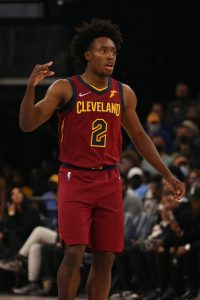After winning his first Most Valuable Player award in 2020/21, Nuggets star Nikola Jokic was even better in ’21/22. And he had to be — with guard Jamal Murray sidelined while recovering from an ACL tear and forward Michael Porter Jr. on the shelf due to back surgery, Denver was missing two of its top three scorers for nearly the entire season.
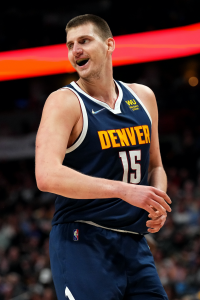 Given the absences of those two key players, it should have been a lost season for the Nuggets, but Jokic was so good that you got the sense the team still had a chance to make some noise in the playoffs if Murray and Porter could make it back.
Given the absences of those two key players, it should have been a lost season for the Nuggets, but Jokic was so good that you got the sense the team still had a chance to make some noise in the playoffs if Murray and Porter could make it back.
Unfortunately, time eventually ran out on the Nuggets’ season before Murray and Porter were ready to return, and despite Jokic’s heroics – and his second consecutive MVP trophy – the club just didn’t have the pieces to keep up with the eventual Western-champion Warriors in the first round of the playoffs.
The Nuggets’ Offseason Plan:
Having a healthy Murray and Porter back in their lineup will go a long way toward turning the Nuggets back into a legitimate contender. But that doesn’t mean the team should be content to sit back and view those returning stars as its offseason “additions.”
Murray and Porter will make the Nuggets’ offense more dangerous, but neither player is an above-average defender, so Denver is in need of one or two more wings who can defend (and ideally who can shoot too).
Newly-promoted head of basketball operations Calvin Booth will be tasked with finding those players, though he’ll have limited resources to do so on the trade market. The Nuggets have given up two future first-round picks and four second-rounders without acquiring any extra picks of their own, reducing the team’s ability to sweeten its offers with draft assets.
That means the Nuggets may have to dangle players like Will Barton, Monte Morris, and possibly Zeke Nnaji as they pursue defensive upgrades. All three are solid contributors on reasonable contracts, but Bones Hyland‘s emergence and Murray’s return should help make at least one of Barton or Morris more expendable.
The Nuggets technically also have the ability to trade the No. 21 overall pick, though they’d have to wait until after the draft to officially move it, due to the rule preventing teams from leaving themselves without a first-rounder in two consecutive future drafts.
It won’t bring back an impact player on its own, but attaching the No. 21 selection to some combination of Barton, Morris, and/or Nnaji would be enough to open up some intriguing possibilities for Denver. On the other hand, the Nuggets’ roster is getting expensive and adding a low-cost rookie could help keep their tax bill in check, so perhaps they’ll hang onto this year’s first-rounder or attempt to move back into the second round rather than trading out of the draft entirely.
Booth and his basketball operations team will have several decisions to make on free agents, including DeMarcus Cousins, Austin Rivers, and Davon Reed. Cousins played well as a backup center behind Jokic and helped bring some toughness to the second unit — I’d expect Denver to try to re-sign him, as long as no other clubs offer him a sizeable raise. The Nuggets only have his Non-Bird rights.
Rivers’ and Reed’s futures could be tied to the Nuggets’ other roster moves. They’ve shown they’re capable of playing rotation minutes, but they’ll be pretty low on the depth chart if Murray, Hyland, Morris, and Barton are all still in the mix and may seek other opportunities in that scenario.
The Greens – JaMychal Green and Jeff Green – could both reach free agency if they turn down their respective player options. I’d consider Jeff far more likely to test the market than JaMychal, given that JaMychal’s option ($8.2MM) is the more expensive of the two and he’s coming off a down year.
Assuming JaMychal opts in, the Nuggets could use his expiring contract to help salary-match in a trade, potentially opening up a larger role for Nnaji. Jeff’s ability to knock down jump shots and guard multiple positions on defense makes him a valuable depth piece, but he’s entering his age-36 season, so the team won’t want to pay him too much more than his option amount ($4.5MM).
Jokic, Murray, and Morris are extension-eligible this offseason, but only Jokic is a sure thing to get a new deal — he and the team are expected to finalize a five-year, super-max agreement that will lock him up through the 2027/28 season. The timing probably isn’t right for an extension for Murray, who hasn’t played in over a year, or Morris, who would be ineligible to be traded for six months if he signs for more money or more years than extend-and-trade rules allow.
Salary Cap Situation
Note: Our salary cap figures are based on the league’s latest projection ($122MM) for 2022/23.
Guaranteed Salary
- Nikola Jokic ($33,047,803)
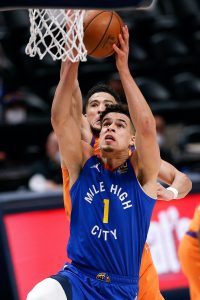 Jamal Murray ($31,650,600)
Jamal Murray ($31,650,600)- Michael Porter Jr. ($30,500,000) 1
- Aaron Gordon ($19,690,909)
- Will Barton ($14,375,000)
- Monte Morris ($9,125,000)
- Zeke Nnaji ($2,617,800)
- Bones Hyland ($2,201,520)
- Total: $143,208,632
Player Options
- JaMychal Green ($8,200,000): Early Bird rights
- Jeff Green ($4,500,000): Non-Bird rights
- Total: $12,700,000
Team Options
- None
Non-Guaranteed Salary
- None
Restricted Free Agents
- Facundo Campazzo ($4,000,000 qualifying offer / $4,160,000 cap hold): Early Bird rights
- Vlatko Cancar ($2,228,276 qualifying offer / $2,228,276 cap hold): Bird rights
- Total (cap holds): $6,388,276
Two-Way Free Agents
- Markus Howard ($1,811,516 qualifying offer / $1,811,516 cap hold): Early Bird rights
- Davon Reed ($1,616,044 cap hold): Non-Bird rights
- Total: $3,427,560
Draft Picks
- No. 21 overall pick ($2,770,920)
- Total: $2,770,920
Extension-Eligible Players
Note: These are players who are either already eligible for an extension or will become eligible before the 2022/23 season begins.
- Nikola Jokic (veteran)
- Monte Morris (veteran)
- Jamal Murray (veteran)
Unrestricted Free Agents / Other Cap Holds
- Bryn Forbes ($5,400,000 cap hold): Non-Bird rights
- DeMarcus Cousins ($1,811,516 cap hold): Non-Bird rights
- Troy Daniels ($1,811,516 cap hold): Non-Bird rights 2
- Richard Jefferson ($1,811,516 cap hold): Non-Bird rights 2
- Austin Rivers ($1,811,516 cap hold): Early Bird rights
- Total: $12,646,064
Offseason Cap Outlook
With $143MM+ in guaranteed money committed to just eight players, the Nuggets are on track to go well beyond the projected luxury tax line of $149MM, so they’ll be limited to the $6.4MM taxpayer mid-level exception unless they shed a contract or two.
Cap Exceptions Available
- Taxpayer mid-level exception: $6,392,000 3
Footnotes
- Porter’s salary will be worth 25% of the salary cap. If the cap ends up above or below $122MM, this figure will be adjusted upward or downward.
- The cap holds for Daniels and Jefferson remain on the Nuggets’ books from prior seasons because they haven’t been renounced. They can’t be used in a sign-and-trade deal.
- This is a projected value. The Nuggets could instead have access to the full mid-level exception ($10,349,000) and bi-annual exception ($4,050,000) if they remain below the tax apron.
Salary and cap information from Basketball Insiders and RealGM was used in the creation of this post.
 The expectation was that if Ayton showed in 2021/22 that he was worthy of a maximum-salary investment, Phoenix would either negotiate a new deal with him as a restricted free agent or match a rival team’s offer sheet.
The expectation was that if Ayton showed in 2021/22 that he was worthy of a maximum-salary investment, Phoenix would either negotiate a new deal with him as a restricted free agent or match a rival team’s offer sheet.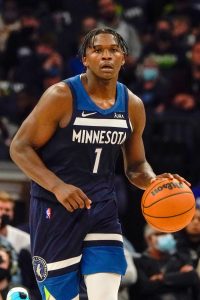 The last time the Wolves won as many as 46 games and made the playoffs, in 2018, the team came apart shortly thereafter, trading away star wing
The last time the Wolves won as many as 46 games and made the playoffs, in 2018, the team came apart shortly thereafter, trading away star wing 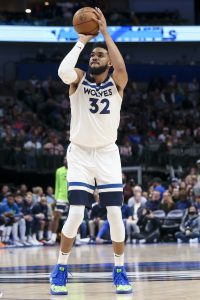
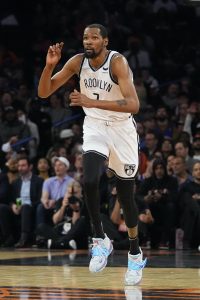 Harden dealt with conditioning and hamstring issues, and reportedly became frustrated by Irving’s inconsistent availability and the Nets’ struggles in Durant’s absence, ultimately requesting a trade prior to February’s deadline. Health problems also impacted
Harden dealt with conditioning and hamstring issues, and reportedly became frustrated by Irving’s inconsistent availability and the Nets’ struggles in Durant’s absence, ultimately requesting a trade prior to February’s deadline. Health problems also impacted 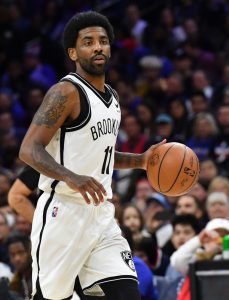
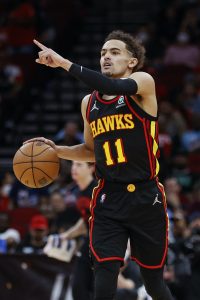 Unfortunately for the Hawks, the Eastern Conference was far more competitive in 2022 than it was a year earlier, and even after winning a pair of play-in games, they ran into a less favorable first-round playoff matchup this time around. The Heat’s defense forced
Unfortunately for the Hawks, the Eastern Conference was far more competitive in 2022 than it was a year earlier, and even after winning a pair of play-in games, they ran into a less favorable first-round playoff matchup this time around. The Heat’s defense forced 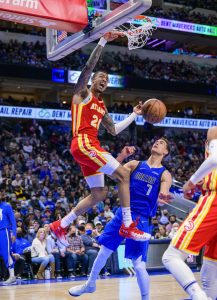
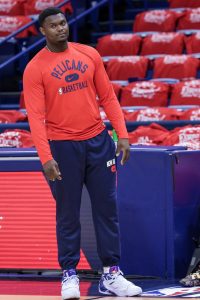 That doesn’t mean the front office can just sit back and enjoy a lengthy summer vacation, of course. The Pelicans still have a handful of big decisions to make, starting with how aggressively to pursue an offseason extension for Williamson.
That doesn’t mean the front office can just sit back and enjoy a lengthy summer vacation, of course. The Pelicans still have a handful of big decisions to make, starting with how aggressively to pursue an offseason extension for Williamson.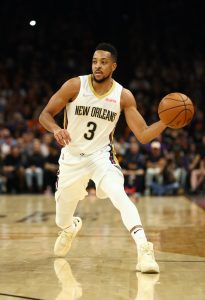
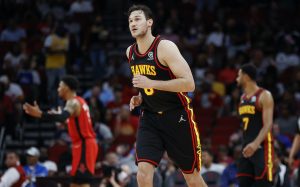 Since over-the-cap teams must
Since over-the-cap teams must 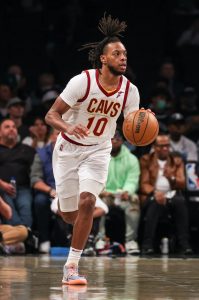 It was a disappointing finish to the year, since getting some best-of-seven playoff experience against a team like the Heat or Bucks would have been a huge step for young players like
It was a disappointing finish to the year, since getting some best-of-seven playoff experience against a team like the Heat or Bucks would have been a huge step for young players like 